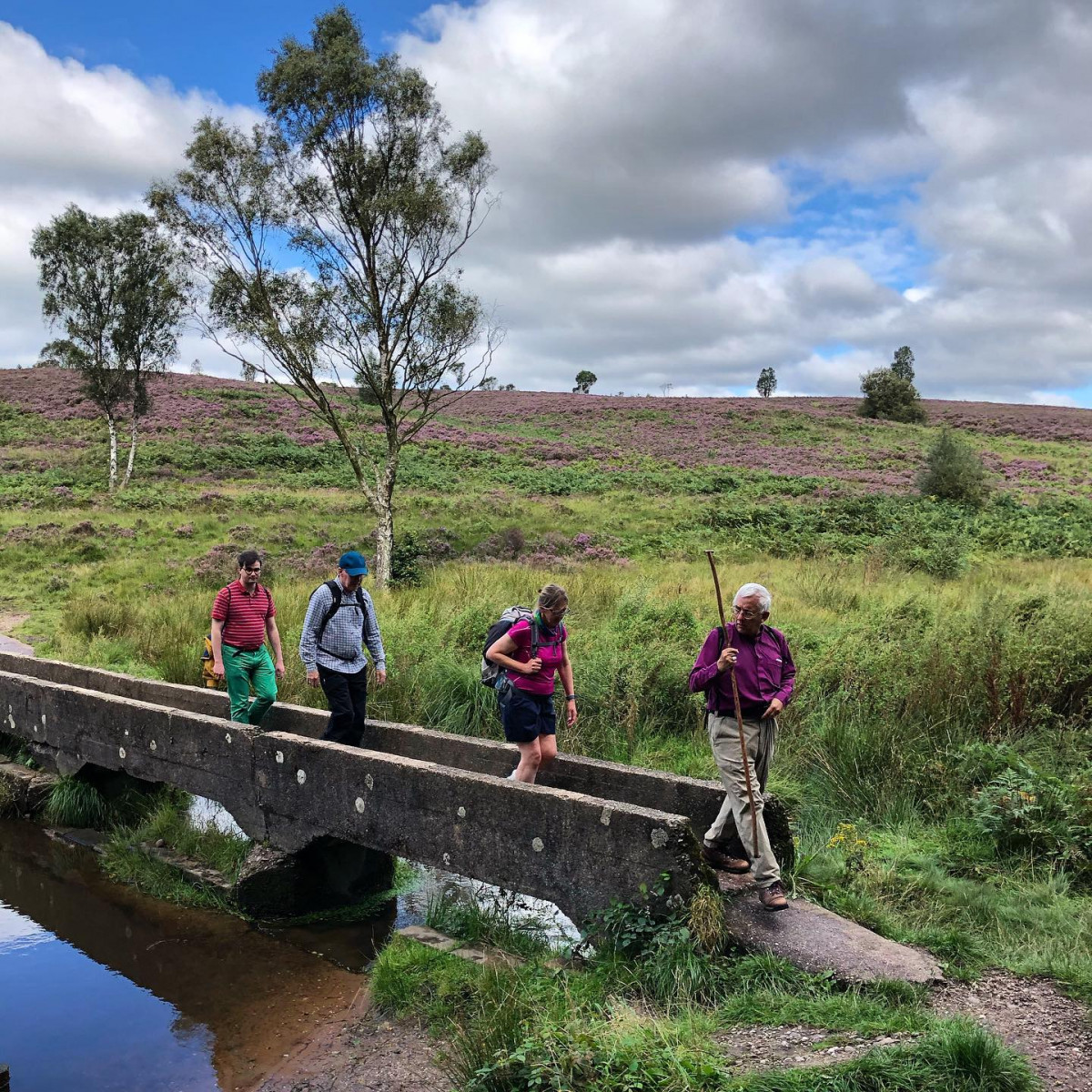 Last summer when COVID restrictions loosened I was fortunate enough to be able to walk round all the churches dedicated to St Chad in this diocese. It was a wonderful experience of walking, prayer and hospitality despite the strange times we are living through. And now I want to encourage you all to join me in a new ‘season of pilgrimage’. As preparation for that I have been reflecting on the meaning of ‘pilgrimage’ in a time of restriction. Three aspects of pilgrimage have particularly emerged for me: pilgrimage as travelling together, as metaphor, and as devotion.
Last summer when COVID restrictions loosened I was fortunate enough to be able to walk round all the churches dedicated to St Chad in this diocese. It was a wonderful experience of walking, prayer and hospitality despite the strange times we are living through. And now I want to encourage you all to join me in a new ‘season of pilgrimage’. As preparation for that I have been reflecting on the meaning of ‘pilgrimage’ in a time of restriction. Three aspects of pilgrimage have particularly emerged for me: pilgrimage as travelling together, as metaphor, and as devotion.
Pilgrimage is most obviously travel: being on the move, getting from one place to another. In lockdown it can feel that we are isolated and going nowhere, stuck in an endless series of grey days that merge together. But we can still continue to invest in learning, in building relationships, in our own spiritual growth. We can still travel forward as pilgrims in the creative ways we have found to be together and build community online and, where safe, in person, despite these times.
Pilgrimage has been used as a metaphor throughout Christian history. We go on physical pilgrimages to remind ourselves that our whole life is a spiritual pilgrimage back to the God who created us, to our heavenly home. We need to take time for individual and communal prayer and for a return to the God who loves us, particularly in this great season of Lent.
And pilgrimage is at its deepest a form of devotion. This holds true whether we are able to go on the traditional long walks together to do it, or not. ‘Pilgrimage of the mind’, it turns out, is not an invention of modern technology, much as many people are enjoying exploring sacred sites online at present. Medieval people who were unable to go on physical pilgrimages, often because they were members of enclosed Religious orders, pored over manuscripts which gave them vivid descriptions of the sacred sites of Jerusalem and other holy cities. Some of these contained exact directions and measurements so that a reader could ‘walk round’ such sites in their own mind and cloister. Popular devotions such as the Stations of the Cross emerged from such mental pilgrimages. We go on pilgrimage, whether in physically or in our minds, to come closer to Christ and allow him to come closer to us.
Many people at present are creatively imagining that they are walking famous long-distance trails or climbing great mountains, when in fact they are logging the miles from their local park or back garden (I have been walking the Cabot trail around Nova Scotia in my own garden in Lichfield!). Drawing on this and on the medieval examples of mental pilgrimage, we hope soon to produce some resources to help people go on a ‘virtual pilgrimage’ exploring places known to St Chad, joining with us in prayer and devotion as we journey onwards. I hope that many of you will be able to join me in this endeavour. In the meantime I would encourage us all to get out and walk prayerfully as pilgrims, whether virtually or, when safe, in reality. In these times above all I believe we must take time for the practice of pilgrimage in our own lives. I invite you once more to join me: come, follow Christ in the footsteps of St Chad.
Bishop Michael